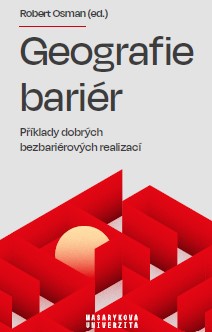Taktické mapování bariér
Tactical mapping of barriers
Author(s): Tomáš Krejčík, Jakub Trojan, Robert Osman, Eva Nováková
Subject(s): Human Geography, Environmental Geography, Rural and urban sociology
Published by: Masarykova univerzita nakladatelství
Keywords: people with disability; barriers; tactical urbanism;
Summary/Abstract: The seventh chapter focuses on an illustrative demonstration of the application of tactical urbanism and tactical mapping on the example of the city of Brno. Here we used six related tactics. First, in cooperation with the Advisory Board for a Barrier-Free Brno, we identify the types of spaces of priority interest. Then (also in cooperation with the Brno City Advisory Board for Accessibility) we prioritize places and institutions that are key for people with disability. In the third tactic, we identify the spatial concentrations of these priority places (in order to identify priority areas). We then identify barriers in the prioritized areas through field research and categorize these into several classes. We then subject each barrier to an assessment of how challenging it is to remove — either in terms of the nature of the barrier or through the lens of ownership/management of the barrier. In the final sixth tactic, we design comprehensive barrier-free routes connecting priority institutions and focusing on removing precisely those barriers that would provide the greatest “benefit” (i.e., most help to make the route more accessible) in the spirit of tactical urbanism. The design of the tactical mapping process is not one-size-fits-all and openly deals with dead ends. For example, it has been shown that it is not necessary to use sophisticated instruments to successfully describe the nature of barriers (but a common smart phone will suffice) or that barriers cannot be narrowed down to point objects, but we must also work with linear barriers (such as missing guide lines, warning strips, etc.). It is also important to have a broader interdisciplinary team involved in tactical mapping — in addition to social geographers and cartographers, this includes barrier specialists (so that barriers in space can be clearly identified) and public administration representatives who are in charge of accessibility. However, it should be taken into account that this is an illustrative example working in a specific city.
Book: Geografie bariér: Příklady dobrých bezbariérových realizací
- Page Range: 235-274
- Page Count: 40
- Publication Year: 2021
- Language: Czech
- Content File-PDF

